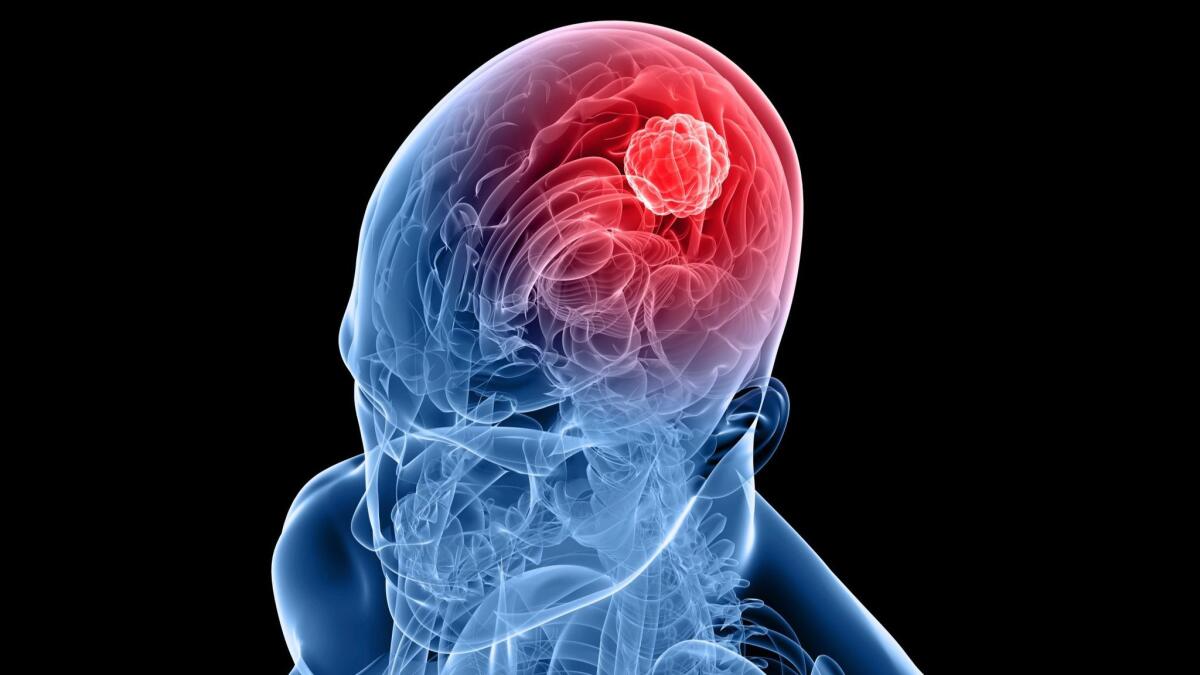Sen. John McCain has a glioblastoma tumor. Here’s how doctors treat this aggressive form of brain cancer

Being told you have cancer is never welcome, but being told you have a glioblastoma tumor is especially scary.
This is the news that longtime Arizona Sen. John McCain got after he had a blood clot removed above his left eye on Friday. A glioblastoma is the same type of tumor that killed Sen. Edward M. Kennedy in 2009. It also was responsible for the death of Beau Biden, son of then[-Vice President Joe Biden, in 2015.
Glioblastomas are known among the medical community for being an especially aggressive form of brain cancer and particularly challenging to treat.
“The median overall survival rate is somewhere between 14 and 16 months,” said Dr. Raju Raval, a radiation oncologist at Ohio State University’s Comprehensive Cancer Center. “That means half of people with this diagnosis may live that long or longer, but the other half are no longer with us, despite everything that is done.”
There are a few reasons that glioblastomas present such a challenge to treat. The tumors, which grow in the supportive tissue of the brain, are extremely fast-growing. They are also complex.
“There is actually a lot of diversity in the cancer cells of the tumor,” said Dr. Ian Dunn, a neurosurgeon at Brigham and Women’s Hospital, in Boston. “It’s almost like a tumor in a tumor with different features and different faces. That makes it hard to provide one treatment approach.”
In addition, glioblastomas tend to have what doctors describe as “fingers” along the edge of the tumors, making it nearly impossible to remove all the cancerous cells during a surgery.
“Surgery is very effective at removing the mass of the tumor and relieving pressure in the brain, but it doesn’t get you all the invasive cells,” said Dr. Behnam Badie, director of the brain tumor program at City of Hope in Duarte.

Dunn put it this way: “This is not like a golf ball floating in Jell-O. Even if an MRI appears clean, you still need to target remnant invasive cells that may still be there.”
So, what does a person with a glioblastoma diagnosis do?
The standard course of treatment begins with surgery to remove as much of the tumor from the brain as safely as possible.
After a few weeks of recovery, that is followed by five to six weeks of daily, low-dose radiation and chemotherapy treatments. This chemotherapy is primarily to help the radiation be more effective.
The final step is a higher-dose of chemotherapy. The schedule is usually five days of daily chemotherapy, then three weeks off, then another five days of treatment. This continues for six months to a year.
But Badie said that even with this rigorous treatment, glioblastomas often show up again in the same region of the brain where they first occurred.
“If you averaged everyone who received this standard treatment, almost half of the patients have tumors that come back in a year or a year and a half,” he said.
Although the diagnosis is generally pretty grim, doctors said there may be some hope for McCain.
Researchers are working on promising new therapies that are trying to harness the power of the body’s immune system to fight cancer cells in the brain, and patient trials are ongoing.
“What lots of oncologists will try to do now is offer something in addition to the standard care to see if survival can be increased,” Dunn said.
He said it’s likely that McCain is discussing the diagnosis with his doctors, gathering information about the disease and getting advice from an array of cancer specialists.
“It’s important to understand all your options, and get a number of opinions before you hunker down and stick to a plan,” he said.
Do you love science? I do! Follow me @DeborahNetburn and “like” Los Angeles Times Science & Health on Facebook.
MORE IN SCIENCE
About one-third of dementia cases could be prevented by actions that begin in childhood, experts say
U.S. researchers are trying a series of life hacks to try to ward off dementia
Half of Americans have diabetes or a high risk for it — and many of them are unaware







